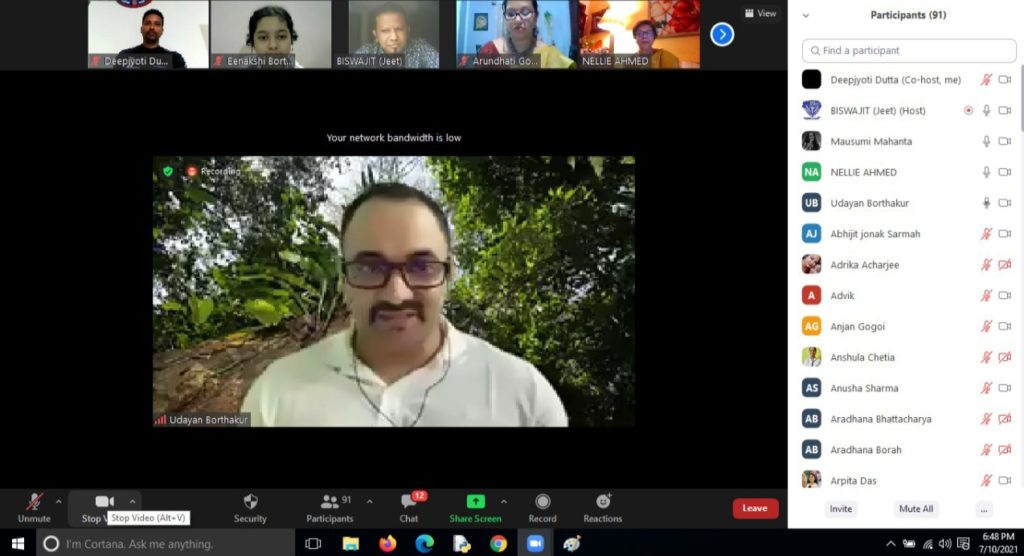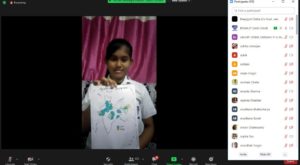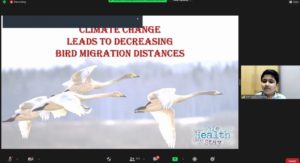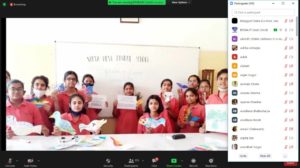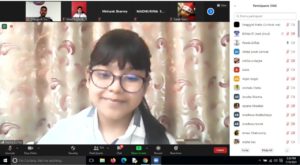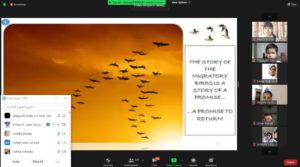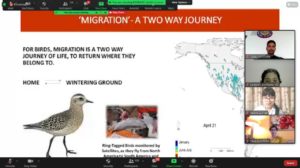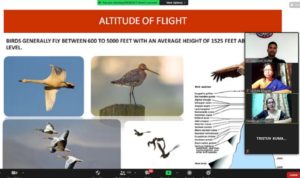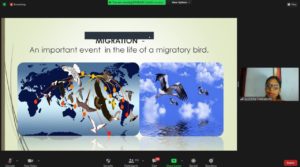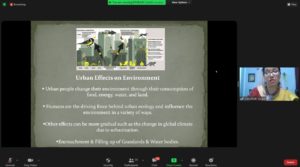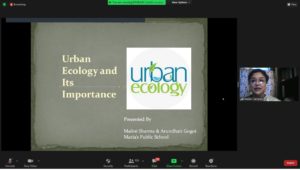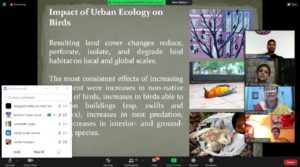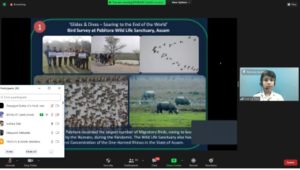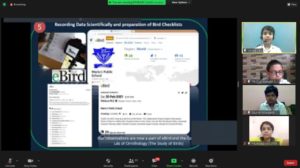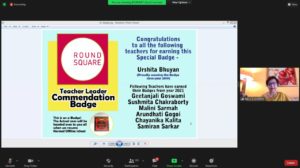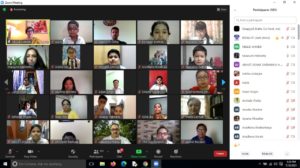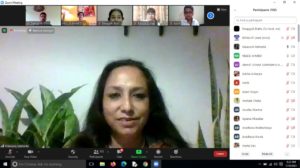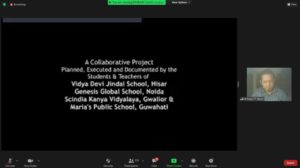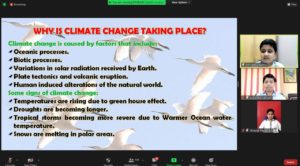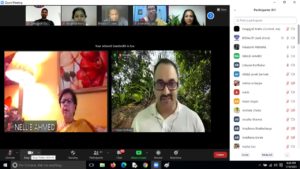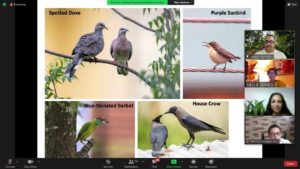
MARIA'S PUBLIC SCHOOL
UNDER MARIA'S PUBLIC SCHOOL EDUCATIONAL TRUST
A Senior Secondary School affiliated to Central Board of Secondary Education
Glides and Dives: Soaring to the End of the World - the first ever student-led conference of Maria's Public School By Iffat Ikram and Jannat N.S. Rahman
Glides and Dives: Soaring to the End of the World, the first student-led conference of Maria’s Public School began with an insightful introduction by the hosts for the day, Reeda Zulfiaz and Eenakshi Borthakur.
Advik Chakraborty of Class 2A, Maria’s Public School posed a very interesting question “Why do we love birds?” as he began his speech. The young environmentalist emphasized on the value of birds, on understanding their existence more than their appearance. He also urged the audience to learn more about the migration process, for it is through empathy that we start caring more about things. Advik’s crisp and astute presentation was an eye opener for the audience.
The host then invited the Founder and Managing Trustee, Ms Nellie Ahmed to share her views on the topic. Ms Ahmed started her speech with the quote “Only with healthy ecosystems can we enhance people’s livelihoods, counteract climate change and stop the collapse of biodiversity”, which caught the attention of the audience. She threw light on issues like how the exploitation of nature, climate crisis and the ongoing pandemic have not only affected the lives of human beings but also of the aerial beings. Ms Ahmed then spoke on the emphasis of Maria’s Public School on “Learning beyond the Classroom” and “Nature as a Classroom”. She explained how “Glides and Dives”, initially started as an action plan, which was later levelled up and made into a collaborative project including three Round Square affiliated schools. She concluded her speech with a special announcement, congratulating the teachers Urshita Bhuyan, Geetanjali Goswami, Sushmita Chakraborty, Malini Sarmah, Arundhati Gogoi, Chayanika Kalita and Samiran Sarkar, for earning the Teacher Leader Commendation Badge from Round Square, for their commendable work towards various projects. With this Mrs Nellie Ahmed officially commenced the ceremony.
Following this, the host invited the Principal, Ms Mausumi Mahanta, to deliver her speech. The principal highlighted the various achievements of the school over the years which included being invited to the United Nations International Conference during the years 2007 through 2013, wherein a group of six students accompanied by a faculty member was invited to visit the USA to attend the conference. The educator concluded by stating how the school’s curriculum with environment has become stronger over time and experience. “Glides and Dives” which began as an action plan has now become a case study which is being followed by many schools.
The host then introduced Mr Biswajit De, who explained the Glides and Dives project in detail. He explained how the project initially began in 2019, and how it evolved over time resulting in this student-led conference. He also showed how students were taught with the Geographical Information System (GIS) and laid emphasis on how the project involved migratory birds, waders and shorebirds. He then played a video for the audience that was both insightful and emotional in many instances. The video ended with the quote “Migration is a fight for life.”
The host then began with the first presentation of the day. The junior group with Mrinank Sharma, Ayushman Nair and Sinasta Meitei, presented on how climate change leads to decrease in bird migration distance. The budding changemakers laid emphasis on how climate change affected the lives of migratory birds and focused especially on the following birds: the Blue Tailed Bee-eater, the Great Egret, the Northern Pintail and the Black Stork. The group concluded their presentation with a call for action, for working towards a world that would stand against climate change.
Following this, the second group of presenters with Gargi Gogoi, Anshula Chetiya, Hemish Deka and Satakshi Kashyap dealt on the topic “Understanding Endemic Species”. The students began with an explanation on how endemic species are endangered and on the verge of extinction. The group posed the question, ‘What will happen in the absence of endemic species?’ and delved deeper into the issue with commendable insights.
This was followed by the presentation of the second plenary speaker, senior teacher Susmita Chakravorty’s presentation which highlighted on the topic, “Vanishing wetlands and threats faced by the migratory bird.” She rightly explained how humans have lost a sense of respect for water and wetlands and also how migration is like a ‘pilgrimage’ for the migratory birds. During migration, wetlands provide an essential stop-over for many migratory birds and that due to the decreasing wetlands many species of the same are dwindling and as a result, they are changing their destination or routes. Wetlands are used as breeding grounds, buffer zones and they also provide the birds with food, destruction of which highly impacts the birds. A few Ramsar sites in India were also well specified in the presentation.
The third plenary presentation was on the topic, “Urban ecology and its importance” which was presented by teachers Malini Sarmah and Arundhati Gogoi where they explained what urban ecology is, the species found in such an ecosystem, and the methods to study the same. They further talked about urban biodiversity and effects on the environment, its sustainability and urban ecology on birds. Furthermore, they also explained why the study of urban ecology should be added in the school curriculum.
With that, the programme moved on to a question and answer round where questions such as the routes of migratory birds were asked.
It was followed by a presentation by the junior students Indrika, Tristuv, Sourish and Priyabrata about their experience performing the bird survey at Pobitora Wildlife Sanctuary and undertaking creative projects like making bird cutout designs and bird journals as a part of this collaboration with different Round Square schools. They also expressed how in the process, they also learned how to use devices and equipment, conservative tools and applications and also recorded data and published them scientifically.
The last presenter for the day was Mr Udayan Borthakur, a parent and a Wildlife Biologist. His presentation included his experience performing the back yard biodiversity survey where he along with his daughter recorded various species of flora and fauna in their vicinity.
The first day of the programme was concluded with a vote of thanks by the hosts and the valuable feedbacks by the attendees and teachers.

